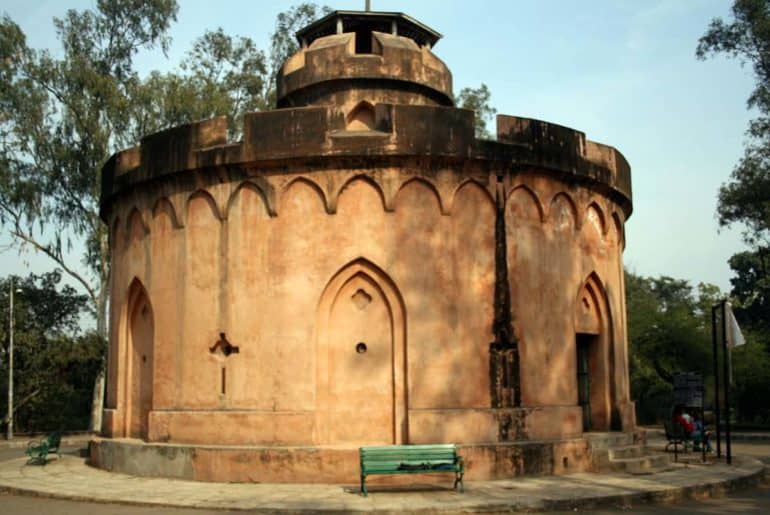Come winter and one rejoices not just with the onset of festivals but also with the complete change of atmosphere. The most spectacular aspect of the 10-day period of festivities is the way 3 festivals connect people across religious communities and beliefs. I had the opportunity to finally get a glimpse of Delhi’s Durga Puja.
Durga Puja is a five-day festival beginning on the sixth day or Sashti of the Navratri week. The day is commemorated by establishing an idol of the Goddess with a Puja in the day and during the evening. For each of those five days, the Goddess is worshipped, celebrated, pleased and praised for her qualities and beauty. The following days involve worshipping and finally on Ashtami, married women fast for their families. This day also includes the Sandhi Puja, wherein 108 diyas are lit around the Goddess and the calm and glowing environment beckons one to talk to Maa and convey one’s feelings. Navami sees a Hawan to purify the air around. Dashami is the last day, when the Goddess is prepared for return to her marital home, by immersing her in water. The day signifies new beginnings and ventures. On Dashami, married women wear white saris and smear red gulaal on each other’s face, celebrating their womanhood. In some places, people also dance with Dhunuchi, the coal-lit diya, as a gesture to please Maa Durga. Children study on this day to gain wisdom and blessings for a brighter future. The rituals include chanting mantras and offering Patanjali to Maa. On the eleventh day, or Ekadashi, Shanti Jal is sprinkled on the devotees and mantras are recited, requesting the Goddess to return next year again.
Like any other festival, the customs include wearing new clothes on every day and a range of delicacies to feast on. While food during the Puja includes pulao, khichdi, puri and Bengali sweets, namely rasgullas, sandesh, mishti doi, coconut-stuffed pancakes and date-jaggery kheer, the Dashami delicacies include steamed hilsa, hot and spicy fish, prawns in coconut milk, mutton, chicken and potatoes in poppy seed paste.
Here’s how Durga Puja was celebrated in two of the most famous pandals of Delhi:
Chittaranjan Park
Kolkata is my hometown. Till last year I had celebrated my ‘Durga Puja Week’ in the ‘City of Joy’, however this year I didn’t get the opportunity to do so. Frankly, I was not expecting much from Delhi’s Puja, but it would not be wrong to say that I made a huge mistake by underestimating Chittaranjan Park’s potential to surprise me.
The same fervour, the same atmosphere and the same excitement – thousands of people were forming queues to enter into the pandals in different blocks. What irritated me a bit was that it was a little less organized. However I did have the patience to enter 3 Pandals in C.R. Park itself. The ‘Kali Mandir’ Puja was nostalgic and had an earthy atmosphere. The Idol was one of the beautiful pieces of art I had ever seen. Then we walked our way towards the ‘Mela Ground’. The area is extremely big. It reminded me of Kolkata’s very own Maddox Square. The beautiful idol here had a traditional vibe to it. Finally we went to the ‘Cooperative Ground, Durga Puja Samity’ Puja. This was quite different. The Idol like others was beautiful, but the pandal had a ‘stairway to heaven’ theme to it. There was a separate stage for cultural events, where people danced, sang and kept the festive spirit alive.
Civil Lines
I was lucky to be able to visit one of the oldest pandal in the capital, at Civil Lines, opposite Indraprastha College for Women, hosting Durga Puja since 1910. The aura of orange and yellow drapes and ceilings with colorful lanterns immediately caught my eye. Mr. B. Mukherjee, the convener of the Puja informed me that the first idol worshipped here was brought from Benares in 1912. Later, in 1915, the organizers first arranged for an idol from Delhi itself. I got to be a part of the morning puja – I chanted the mantras with flower petals in my hands, and realised that they were the Sanskrit shlokas we chanted in school. Although everything I laid eyes on was mesmerising, I will especially mention how smitten I was with the Idol. As she stood magnificently, towering her faithful devotees, the shimmer of small glasses around her produced an everlasting impression on me. The charna-amrit after the Puja and the prasad consisting of fruits, dates and sweets left me all the more holy.
If you missed the opportunity this year, keep in mind that there is a 104-year old Durga Puja right here in North Campus and make a point to visit it next year.
With inputs from Ishaan Sengupta.
Featured image credit: www.tourmyindia.com




